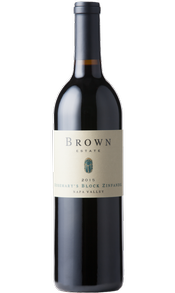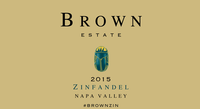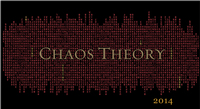Wine comes in three colors: White, red and pink. American vintners come mostly in one color: White.
Skin color obviously does not affect a person’s ability to make wine or to sell wine any more than gender does (and let’s remember that women winemakers were mostly ignored until 1965, when Mary Ann Graf became the first woman to receive an enology degree from UC Davis). So, why do so few African Americans become vintners? Economics and opportunity are obvious explanations, as are cultural background and exposure to wine: People who grow up in a non-wine drinking environment are less likely to become wine drinkers themselves. Statistics on this vary, but a 2014 Sonoma State University Wine Business Institute study found that 65 percent of American wine drinkers are white, 13 percent Hispanic, 11 percent Asian, and 11 percent African American.
It’s difficult to say precisely how many Black-owned commercial wineries are operating in the US today, but ten or twelve is probably a safe guess. Keeping track of the exact number is challenging because, as with wineries owned by white people, estates with black owners tend to come and go, partly because winery ownership is a notoriously expensive and competitive business no matter what color your skin is. There is also some evidence of African-American winery owners having been duped into various kinds of discriminatory financial transactions including high-cost bank loans.
But I want to tell a happier story here, a tale of two different American wine companies, with two distinctly different personalities, in two different states. One thing they have in common is black ownership.
Brown Estate, which bills itself as the only Black-owned winery in the Napa Valley, produces Chardonnay, Petite Sirah and Cabernet Sauvignon, but is perhaps best known for its Zinfandel, which has been praised by critics such as Robert Parker (“Rich, full and opulent with crisp acidity to balance…Long

finish,” 91 points). The winery was established in 1995 by siblings Deneen, David and Coral Brown, but its genesis dates back to 1980, when the Browns' parents, Bassett and Marcela, were looking for a rural retreat to buy. Their search ended when they found an abandoned property in Napa’s Chiles Valley that included 450 acres of land plus two dilapidated buildings, a 1859 stone and redwood barn and an 1885 Queen Anne Victorian home.
The family cleared the land, built roads, brought in water and electricity, and restored the old house. According to David Brown, “Our parents had no idea that their ‘character building scheme’ to have us spend our summer vacations working on a farm would accidentally lead all of us into the wine business.” As family lore has it, the decision to plant grapes on their newly purchased land was almost accidental. When someone told the senior Browns that it was a shame the land wasn’t suitable for grape growing, the siblings recalled that their parents locked eyes: Since nothing motivated them more than being told they couldn’t do something, they knew instantly that they were going plant wine grapes on this land.
That first vineyard, nine acres of Zinfandel, was planted in 1985. At a time when everyone in Napa seemed to be focusing on Bordeaux varieties, the Browns’ decision to dedicate their first vineyard to Zin was a quixotic choice, inspired in part by Zinfandel’s long tenure as the favorite grape of pioneering 19th century California vintners, and perhaps as well by Zin’s fall from grace in the 1970s and 80s (think blush wine) and subsequent redemption in the

early 90s. In any event, Brown Estate was soon selling its Zinfandel grapes to premiere wineries such as Mike Grgich.
In the mid-1990s, with demand for their fruit growing, David and Deneen Brown, who were living on the property at the time, decided to produce wine under their own label. Having no winery facility of their own, the Browns negotiated a custom crush contract with Rombauer Vineyards, where they produced wines for six years. The first two vintages, 1996 and 1997, were well received by critics and consumers alike. Then, in 2000 a fire broke out at the warehouse where the family’s library wines and newly bottled Zinfandel vintage were stored. The entire stockpile of 1998 Zinfandel was gone.
This catastrophic event did not deter the Browns for long. Two years after the fire the siblings decided it was time to build their own winery. The dilapidated historic old stone and redwood barn on their land was restored and turned into a state-of-the-art winery, but as production increased, they soon outgrew the space. It was clear that they would have to build a wine cave.
Napa boasts many impressive wine caves (Jarvis Estate, Stag’s Leap Cellars, and Schramsburg come immediately to mind), but undertaking this particular kind of project is fearsomely expensive and hellishly noisy. Because the Browns’ hillside property sits on a bed of solid granite, dynamite as well as drilling was necessary. But a year later, the project was finished, the racket and dust had settled down, and the Brown Estate now has ample space for barrels. It also has all the drama and beauty that only an outstanding wine cave can offer.
In addition to Brown Estate’s range of Zinfandels, they also produce

powerhouse Cabernets; a 100% Charbono; and “Chaos Theory” (a blend of Cabernet, Merlot, Zinfandel and Petit Sirah), as well as a Muscat/Viognier blend.
The most distinctive thing about Brown Estate’s property is that its fifty acres of vineyards are planted in the midst of what David Brown describes as 450 acres of “roughneck wilderness.” The fact that the vineyards comprise only ten percent of the land, he continues, “really gives you the sense that the vineyards are part of a larger organism. The surrounding woods are a constant reminder that the land belongs less to us than to the animal and plant life we share it with.”
Just as there are few African-American vintners in America, so too is the number of black sommeliers miniscule. Nothing in André Mack’s early life indicated that he might become a sommelier, let alone that some day he would own a wine company. Mack, who was born to a 16-year-old single mother, spent the first years of his life in Trenton, New Jersey. “No one in my family consumed wine of any kind,” he says.
When I ask if there’d been a particular “
a-ha” moment that introduced him to wine, Mack replies that watching the old “Frasier” television shows first

piqued his curiosity. “It was those two pompous brothers musing about wine that made me feel like I was missing out. It’s what gave me the courage to walk into a wine shop.” But wine didn’t enter his life seriously until the early 2000s, when he traded his “desk job” at Citicorp Investment Services for a position at The Palm, a high-end steakhouse in San Antonio, where after more or less bluffing his way into a job as sommelier, he began studying and tasting wine. The Palm is where the real moment of enlightenment hit: “I think that tasting six different white wines side by side during the opening training session is what did it for me.”
In 2003, at the age of 30, André Mack was named Best Young Sommelier in America by the National US Chaîne des Rôtisseurs, the first African-American to win this award. Thomas Keller promptly hired Mack as sommelier at the French Laundry in Yountville, California, and within a short time he moved to Manhattan to manage Keller’s Per Se restaurant’s 1500-selection award winning wine list. He also met Phoebe Damrosche at Per Se, where she was waiting tables and gathering material for her book,
Service Included: Four-Star Secrets of an Eavesdropping Waiter. Married now, the couple have three young sons.
Many young men in Mack’s situation might have settled back to enjoy their considerable successes--but not André Mack, who by this time wanted his own wine business. And so, in 2007, Maison Noir was born (originally called Mouton Noir, the name was changed following a dispute with Chateau Mouton

Rothschild). Maison Noir works with some 1,300 Oregon vineyards under contract, and the wines are made by André Mack inside a custom crush facility.
In the beginning there was little money but plenty of creative solutions at Maison Noir. “I couldn’t afford a designer when I started it so I taught myself graphic design through designing my own labels and t-shirts,” Mack says. “Two years later, as client demand increased, I started
Get Fraîche Cru, a graphic design firm.”
Get Fraîche Cru’s dynamic and often zany graphics are compelling. The names of the wines themselves are generally informative as well as amusingly unconventional: “Bottoms Up” (mostly Riesling with Pinot Blanc and Viognier); ”Knock on Wood” (100% Chardonnay, all stainless steel, no malolactic fermentation); “Horseshoes & Handgrenades” (Syrah, Cabernet Sauvignon and Merlot: “Think Cherry Pits and Leather Whips”).
Although Mack and his family live in Brooklyn, he is at Maison Noir about one week every month (and the family spends most summers in Oregon). On any ordinary Monday or Tuesday morning Mack can be found boarding a plane, on his way to do market visits. When he’s on the road selling the wines you’ll typically find him sitting in his rental car before a wine dinner reading books to his kids on FaceTime. A self-described “people person,” he likes being on the road, connecting with people, eating out.
But do not for a minute think that all André Mack does is produce and promote Maison Noir wine, run a design business, and spend time with his family. He has also created
Small Thyme Cooks, the world’s first culinary coloring and activity book. He is currently working on a new book, part memoir, part wine book, due out next fall. Oh, and did I mention that André Mack and Phoebe Damrosch are in the process of opening a wine bar in Brooklyn? Called &Sons, Mack describes it as an American Ham Bar. “It’ll be very reminiscent of a Spanish Jamon bar,” he says. “We’ll be specializing in domestic charcuterie and cheese, and we’ll have an all-American wine list with a focus on wines from the 70s, 80s and 90s.”
In an email, I ask Mack what his ideal wine might be. “I can appreciate all different styles of wine, and I think every single one has its time and place,” he responds. “So, to me, wine is really about memories. It’s about the people that you share them with. But since you’re asking in general terms, I like to drink something that is medium bodied, low alcohol, red. And now I’m going to contradict myself and tell you that wine is really a mood.”
I have one last question for him. Am I being naïve, I ask Mack, in thinking that producing wine is a color-blind occupation?
“Naïve to say the least!” he answers. “That’s like suggesting that racism is over because we had an African-American president. We would all like our wines to be judged on their own merits, but every time I walk into a room I’m hit with a barrage of questions that have nothing to do with my wine. The challenges I face as an African-American vintner are no different than the challenges I face as an African-American person living in this country.”